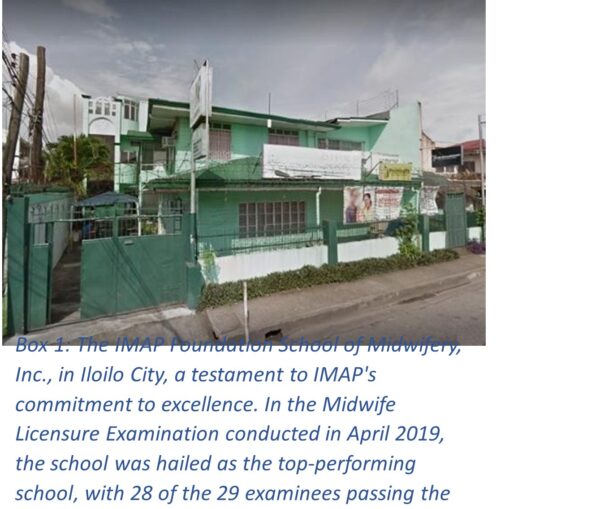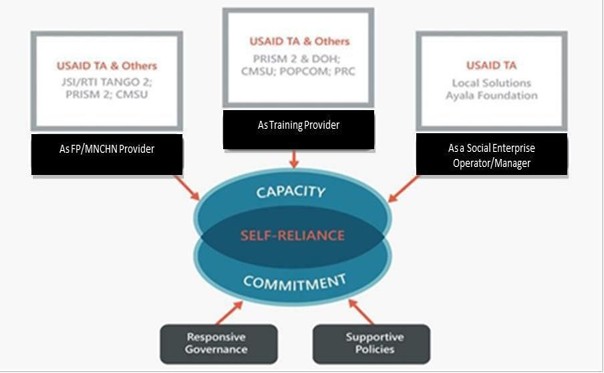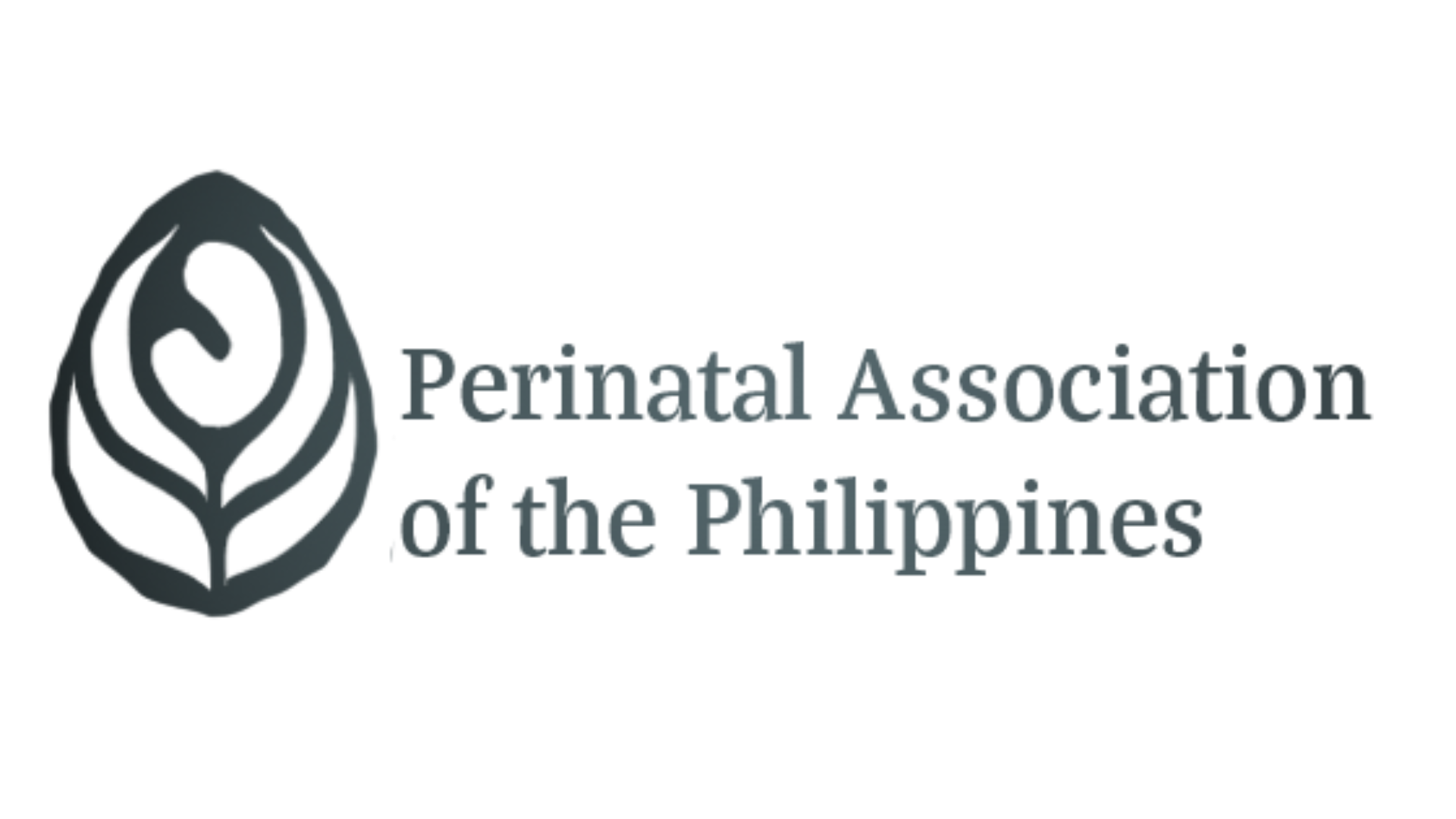
IMAP, Inc.: Retracing A 50-Year Metamorphosis in a Journey Towards Self-reliance of Bringing Filipino Midwives Forward and Onwards
The Collaborating, Learning, and Adapting for Improved Health (CLAimHealth) activity, which provides monitoring and evaluation, learning, and adaptive management support to the USAID/Philippines’ Health Portfolio, documented the self-reliance journey of IMAP. This article contains excerpts from the documentation study that traced the metamorphosis of the Integrated Midwives Association of the Philippines (IMAP), a nonprofit private, professional organization, from the breaking of the shell (1975 to 1992) to the time the caterpillar took form (1993 to 2011), to the time that the chrysalis unraveled (2012 to present) so that it could eventually take wing (become self-reliant). It gained relevance in every stage as it responded to the evolving demands of women, couples, families, and communities.
Midwifery education started in the Philippines in 1922, when Dr. Jose Fabella founded the first school of midwifery in Manila attached to the Maternity and Children’s Hospital (now Dr. Jose Fabella Memorial Hospital).[1] Two midwifery schools later opened in Cebu and Bacolod, Negros Occidental, in 1922 and 1923, respectively. In 1976, the IMAP Foundation School of Midwifery opened as a pilot school for the two-year community-based midwifery curriculum in Jaro, Iloilo City (see Box 1). To date, at least 157 schools are offering midwifery courses nationwide.

Midwives in the Philippines play a pivotal role in delivering patient-focused services that are accessible, affordable, and appropriate to patients’ needs. The midwifery profession has become central to the delivery of effective health services, particularly in rural areas, bridging the gap between health needs and available services and significantly contributing to public health.
Overview of IMAP
IMAP is a nonprofit, private, professional organization of midwives that was created on September 5, 1975, with the integration of the Philippine Midwives Association (PHIMIDAS), which was founded in 1947, and the National Federation of Filipino Midwives (NFFM), which was registered with the Securities and
Exchange Commission (SEC) on August 22, 1961. It was born at a time of high maternal and child mortality rates due to the high rates of unsafe home deliveries by traditional birth attendants. IMAP, registered with the SEC on March 17, 1976, envisioned enhancing the competencies of its members to reduce maternal and infant mortality through sustained collaboration and partnership with relevant local and international agencies. It has since committed itself to elevating the standards of the midwifery profession and supporting its members to provide quality healthcare services to women, families, and communities. In 1975, the PRC designated IMAP as an accredited professional organization for midwives, which strengthened IMAP’s role in the professional advancement of its members.
Emerging from the Shell (1975 to 1992)
After the merger of PHIMIDAS and NFFM, IMAP was challenged to survive and prove itself as an organization. On the other hand, there were ample opportunities for IMAP to grow as a professional organization, particularly as it was designated as a PRC-accredited professional organization for midwives in the country in 1975. The steady growth and development of IMAP as a professional organization validated its mission and reassured its members of its enduring presence and influence in midwifery.
Since its founding in 1975, IMAP has been led by distinguished presidents with diverse expertise who contributed to its steady growth. The leaders worked hard to establish internal mechanisms that underpin a viable organizational structure, including its broad membership, which spans across the archipelago, and a system of procedures, guidelines, and policies to govern the general operations of the association and guide its members.
The association quickly became an influential advocate for the formulation of midwifery, reproductive health (RH), and family planning (FP) legislation and policies. During this stage, one of its significant achievements was pushing for the passing of the Republic Act No. 7392 (Philippine Midwifery Act). The law was approved on April 10, 1992, during the term of President Fidel Ramos, who supported the country’s population and RH programs. This legislative victory solidified the association’s influence and empowered its members to continue advocating for the profession’s advancement.
The Caterpillar Takes Form (1993 to 2011)
IMAP’s growth may be likened to the caterpillar phase in a butterfly’s development, with increasing mobility and opportunities for further development. At this stage, the United States Agency for International Development (USAID) became involved with other USAID Implementing Partners (IPs), providing IMAP’s members with skills enhancement training and workshops.
Accreditations, Awards, and Memberships in National and International Organizations
As an affirmation of the association’s capabilities and potential, its visibility in the national and international arenas has earned it several recognitions through accreditation, awards, and membership in a reputable international organization.
Further strengthening the growing organization, the Civil Service Commission (CSC) formally accredited IMAP as a full-fledged training institution for midwives on maternal and childcare on July 7, 1997. This created an opportunity for government-employed midwives to enhance their knowledge and skills and to utilize the CSC accreditation for future placements.
Through the efforts of one of its previous presidents, Alice Sanz de la Gente, who went on to become president of the International Confederation of Midwives (ICM) from1996–1999, IMAP became an active member of the Confederation, which is currently based in The Hague, Netherlands. She played a significant part in hosting the 1999 ICM Congress in Manila.
In 2009, IMAP’s commitment to professional development was recognized when it became a PRCaccredited Continuing Professional Development (CPD) provider for midwifery. The following year, PRC further acknowledged IMAP’s dedication to the profession by presenting it with the Outstanding Accredited Organization award, a testament to its commitment to the continuous improvement of midwifery practice.
On October 15–17, 2006, IMAP hosted the 8th ICM Asia-Pacific Regional Conference in Cebu City.5 It was the first time that IMAP had hosted the regional conference, the theme of which was “Empowered midwives: a gateway to global health.” During the meeting, Dr. Catherine Castañeda, director of the CHED Office of Programs and Standards, discussed the Technical Committee on Midwifery Education’s proposal to offer a four-year Bachelor of Science degree program in midwifery.
Bachelor of Science in Midwifery
In 2007, the CHED approved IMAP’s two-year midwifery bridging program, paving the way toward the four-year Bachelor of Science in Midwifery (BSM). Per CHED Memorandum Order No 33, s. of 2007, the BSM program consists of general education and professional courses that prepare registered midwives for higher level midwifery competencies as a health care provider: educator, researcher, supervisor, and health care facility manager/entrepreneur. (Addendum: The straight 4-year BSM degree program was approved by CHED on February 2023.)
Taking Wing—Is IMAP well on its way toward achieving self-reliance?
Schematic Framework Showing IMAP’s Journey
To Self-Reliance Through Capacity and Commitment

|
5 |
|
|
V |
olume 20, No. 2, June 2007. Available at: |
|
tps://www.nurse.or.jp/nursing/international/icm/update/archive/pdf/2007_06_ing.pdf |
IMAP’s evolution and development as a professional organization show how its struggles, milestones, and achievements paved the way for the association to pursue self-reliance continually. It has programs and projects that benefit local communities, governments, national programs, and the international scientific and professional community. It has built a network of regional and global development partners.[5] IMAP has shown its capacity for self-reliance through the following components: legal personality, governance and organization, membership, assets, revenues, financial capacity, accreditations, awards and recognitions, visibility in the national and international scenes, and internal control systems.
Moreover, IMAP was specifically capacitated by the TA it received from USAID and other development partners in the following areas: 1) as an FP/MNCHN service provider (through its members who own/operate birthing facilities); 2) as an FP/MNCHN in-service training provider for public- and privatesector midwives; and 3) as social enterprise operators/managers (as in the case of the Bohol LICs and individual members who operate their birthing facilities/LICs).
Showing its commitment to self-reliance, IMAP’s key officers have reinforced the organization’s commitment to elevating the standard of the midwifery profession and providing quality health care for women, families, and communities by implementing mechanisms to strengthen staff and members’ skills and capabilities. These systems will help ensure that IMAP continues to grow and thrive and can manage unforeseen challenges.
Reference:
USAID/Philippines Collaborating Learning and Adapting for Improved Health (CLAimHealth) Activity. 2019. The Critical Contributions of USAID to the Integrated Midwives Association of the Philippines’ Journey to Self-reliance, Technical Series No. 4. Silver Spring, Maryland: Panagora Group.
[1] IMAP’s About Us Brief History. Available at http://imapinc.org/public/imapinc/history.php.
[2] Schools offering Midwifery courses in the Philippines. Available at: https://www.finduniversity.ph/midwiferyschools/
[3] Best Midwifery schools in the Philippines. Available at: https://www.pinoymoneytalk.com/top–schools–for–midwifeexam–passing–rate/
[4] Midwifery schools. Available at:
https://www.edukasyon.ph/school/search?utf8=%E2%9C%93&q=Midwifery&program_level%5B%5D=any&button=& utm_source=new_homepage
[5] Imperial, Feliva. IMAP: Empowering Midwives for Better Health Outcomes through 3Ms. Presentation, IMAPIloilo Chapter. n.d.

